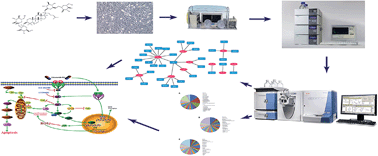Reperfusion therapy is widely used to treat acute myocardial infarction (AMI). However, further injury to the heart that is induced by rapidly initiating reperfusion is often encountered in clinical practice. Ginsenoside Rb1 (Rb1) is the major active ingredient in processed Radix notoginseng, which is often used for ischemic heart disease. To investigate the possible protective effect of Rb1 against the damage of H9c2 cardiomyocytes that is induced by hypoxia-reoxygenation (H/R) and the mechanisms underlying this protective effect, Label-Free Quantitative Proteomics was used. The results indicated that pretreatment with Rb1 caused an increase in cell viability compared with the H/R group. Moreover, pretreatment with Rb1 enhanced the capacity of cell antioxidants and inhibited cell apoptosis. Label-free quantification results revealed 29 differential proteins, including estrogen receptors α (ERα) and estrogen receptors β (ERβ). Next, we used quantitative real-time PCR (qPCR) and western blotting analysis with specific kinase inhibitors to verify the proteomic results. In conclusion, Rb1 provided myocardial protection by inducing an estrogen receptor-dependent crosstalk among the Akt, JNK, and ERK 1/2 pathways to prevent injury to H9c2 cardiomyocytes and apoptosis induced by H/R. The results might be highly important to the clinical efficacy of AMI treatment.

